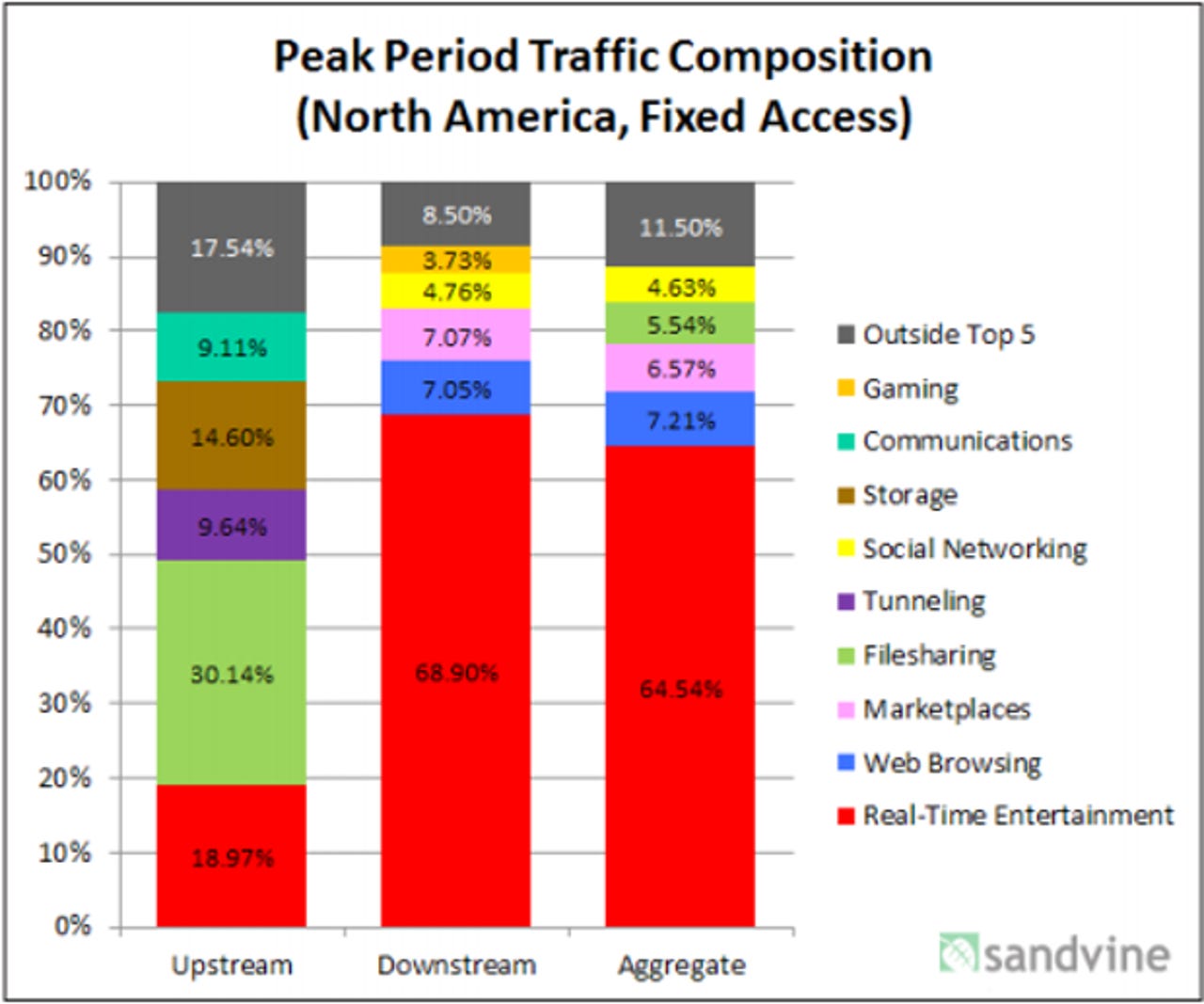Now more than ever, the Internet belongs to cord-cutters

When I started using the Internet in the 80s it was all text. Then, along came the Web in 1993 and we got images. Oh boy! Today, as Mary Meeker, a partner at venture firm KIeiner Perkins Caufield & Byers (KPCB), reported in her annual Internet trends report, 64 percent of all consumer Internet traffic is video. Sandvine, a broadband solution provider and analysis firm, has found that video takes up even more than that in the Internet's peak hours.

The leader of the Internet video pack? It's Netflix again. "Netflix continues to be the leader in peak period traffic, accounting for 36.5 percent of downstream traffic during our study." Nothing else comes close. YouTube takes a distant second with 15.6 percent.
After that, for downstream traffic, HTTP, the good old ordinary Web, comes in with only 6 percent. It's followed by iTunes, BitTorrent, Facebook, and MPEG traffic.
Coming in at eighth place, Amazon Instant Video has only a fraction of Netflix's bandwidth share when 2 percent of peak downstream. Sandvine observed that "Many of the video services observed in our report do experience some seasonal changes in their share based upon the availability of new content on those platforms."
Featured
In particular, Hulu and HBO are both especially susceptible to these fluctuations because much of their content varies on when new programming is available. Sling TV, a US service that allows users to stream popular cable channels such as ESPN without a traditional cable subscription accounted for less than 1 percent of peak downstream traffic. Since Sling TV launched only a month before Sandvine's data was collected, the results don't say much about its acceptance.
Six Clicks: The best Internet TV gadgets
While all this legal video has become available, BitTorrent, the peer-to-peer file sharing protocol best known for video and musical piracy, usage has continued to decline. BitTorrent now accounts for less than 5 percent of total traffic during peak period, and only 6.3 percent of total traffic during the day. In 2008, Sandvine reported that BitTorrent accounted for 31 percent of all Internet traffic.
So, today, the Internet has become the go-to "place" for legal television and movie watching. It turns out that everyone who predicted that the solution to Internet piracy was to make digital downloads and streaming were right.
The old business models of broadcast content are still dealing with this new economic reality. But, just like digital ink did in traditional publishing, the Internet is now changing the media business once and for all.
Related Stories: